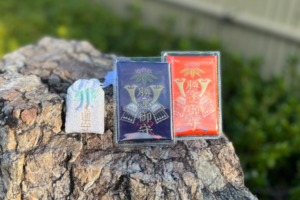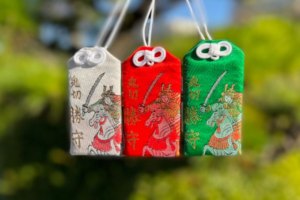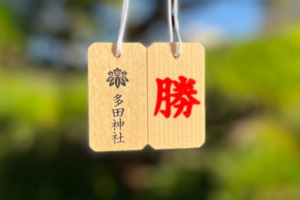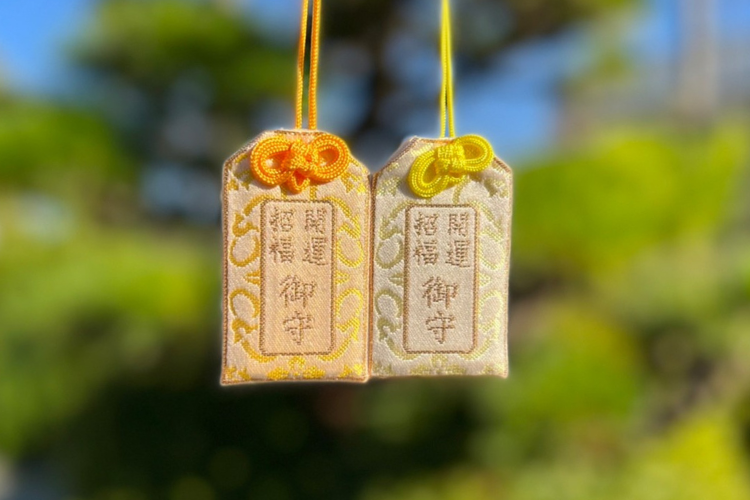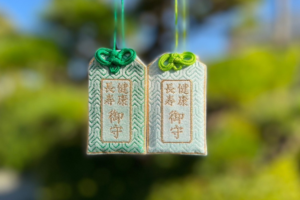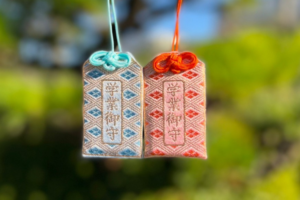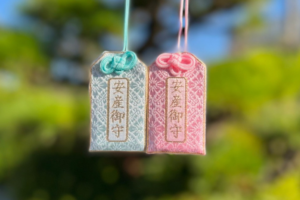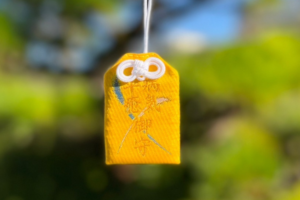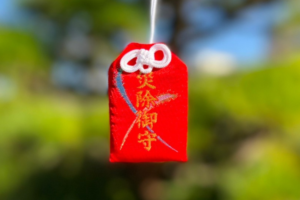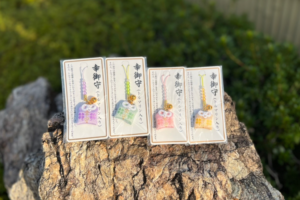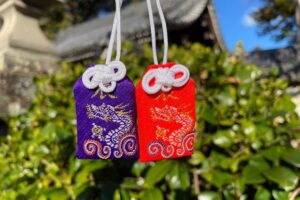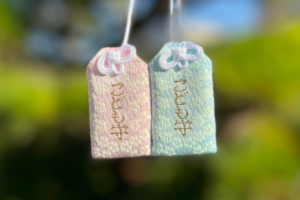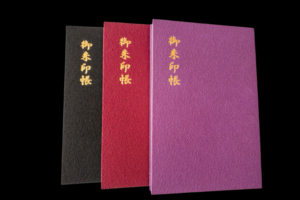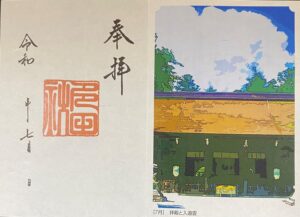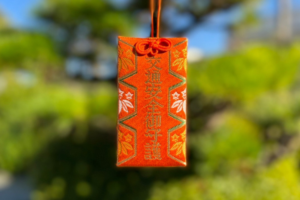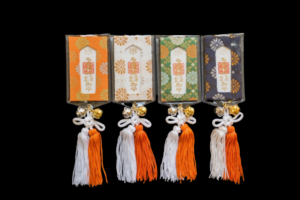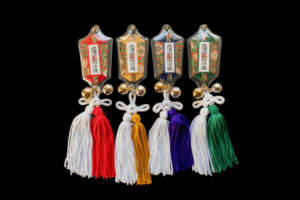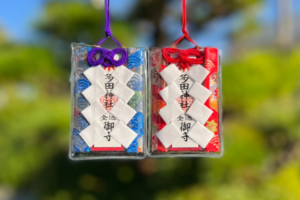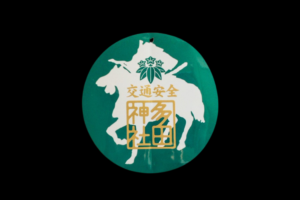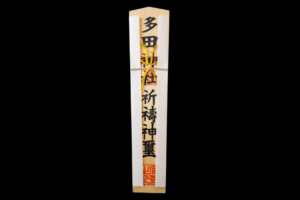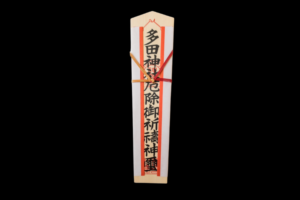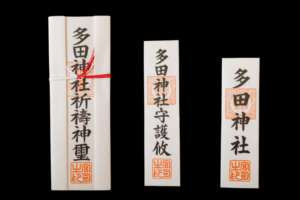Establishment of Tadain
In the year 970, Minamoto-no-Mitsunaka, Lord of Settsu, to whom this shrine is dedicated, went into religions retreat at the the Grand Shrine of Sumiyoshi.
Adivine revelation he received there caused him to develop the Settsu region and establish it as the residence of his clan, the Genji.
At the age of 75, he obtained Imperial permission to enter the priesthood and built a temple in which he enshrined his own image as he appeared at the age of 24.
Lord Mitsunaka determined that this temple was a sacred place for the protection of the nation and for success in battle. This temple, Tadain, is known today as the Tada Shrine.
After the founder’s death in 997, many further structures wear added, the original building and the hall known as Mieido in which Mitsunaka’s image was installed being at the center.
Kamakura and Muromachi Shogunate and Tadain relationship
The temple came to prominence in the eyes of the military shougunate in 1223 when, according to a letter in the shrine’s possession, a famous warrior called Yasutoki Hojo barred a magistrate’s messenger from entering the building. Other documents reveal that later, in the 14th century, the first Muromachi shogun, Takauji Ashikaga, knew of the Tadain and held it in great esteem. He sent a message to the temple containing a prayer for victory in battle and also made a donation.
When Takauji Ashikaga died in 1358, his son, Yoshiakira Ashikaga, buried his father’s mortal remains at Tadain and from that time on the Tadain became the favored burial ground of the Ashikaga Shoguns.
Tadain ringing
An interesting belief surrounding the temple from an early date was that the buildings made a rumbling sound as a forewarning of some great event. Records of the Tradin’s rumblings exist from the time of Yoritomo Minamoto-the first shogun of the Kamakura shogunate-that is, around the year 1200,until about the year 1507.
Although other buildings besides the Tadain were considered to have such powers, they were invariably connected with calamities. A characteristic of the events predicted by the rumblings of the Tadain was that they were always on the fortunateside.
Historic Sites and cultural assets, festival
The temple was burned down in 1577 during a period of civil strife. And it remained in a dilapidated state until the mid-17th century when the fourth Tokugawa shogun. Ietsuna (who considered himself a descendent of the Genji clan), became aware of Tadain’s decline. In 1665, he granted the temple an allowance of agricultual land which would provide an income from the sale of rice and by 1667 the Tadain had been fully reconstructed, but now in the form of a shrine. The main buildings of the present-day shrine (the main shrine, outer oratory and attached gate) were built at that time and have been officially designated Important Cultural Properties.
The history of the shrine is recalled at the Genji Festival held in April, in a procession of attendants representing Minamoto-no-Mitsunaka, the founder of Tadain, and other Genji warriors clad in armor. Famous woman in Japanese mediaeval history, wearing colorful costumes, are also represented in the procession. From the shrine compound, where deep red, large-petalled Chinese camellias are in bloom, the procession proceeds along the banks of the Ina river, passing beneath a row of cherry trees in full bloom. In a magnificent setting the warrior society of the past comes to life.
Also recalling the past is the shrine’s collection of armer, swords and ancient documents. These are on permanent display in the Treasure House.
The shrine grounds, covering 50,000 square meters and surrounded by towering cryptomerias and maple trees, delight the eye with a variety of seasonal flowers and plants-camellias, cherry trees, azaleas, the fresh young leaves of Spring and the tinted maple leaves of Autumn.

